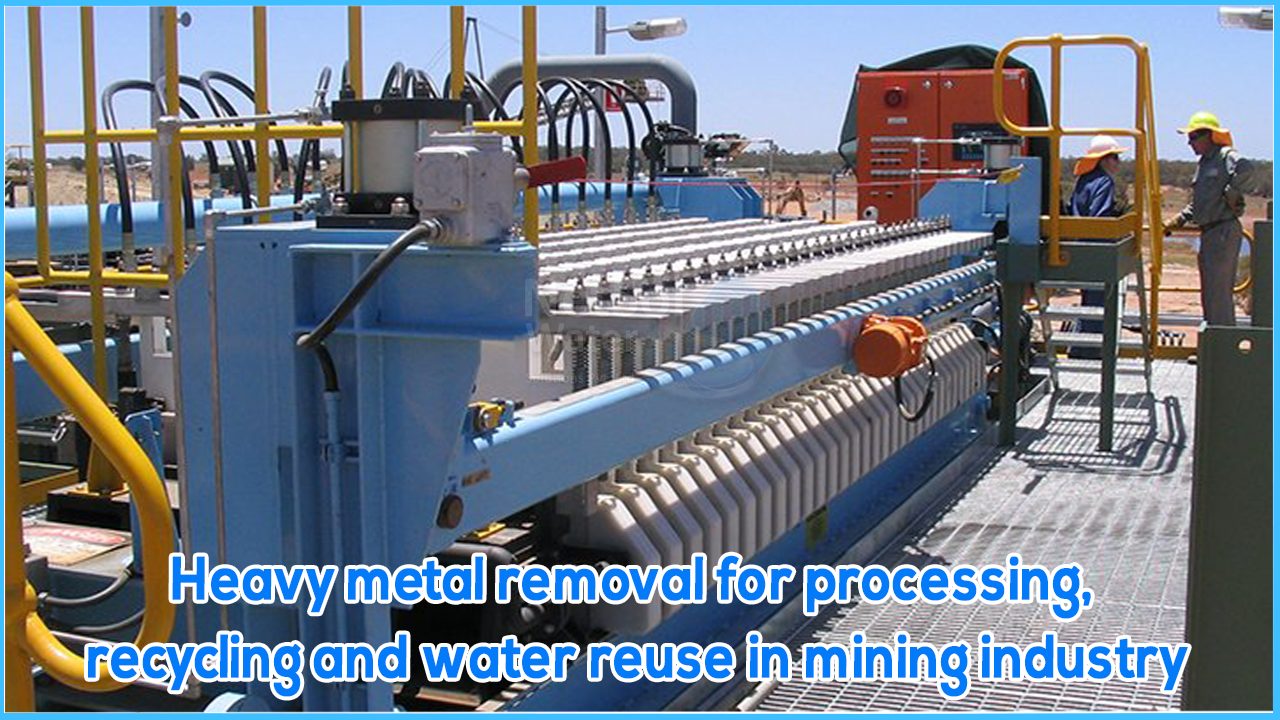A BRIEF INTRODUCTION
As a result of the materials and chemicals employed in the manufacturing processes, many industrial wastewaters contain dissolved metals. Regulatory agencies throughout the world are continuing to reduce the allowable discharge limits for numerous controlled pollutants, including mercury, lead, cadmium, nickel, zinc, copper, chromium, arsenic, and selenium, in response to concerns about the environment's overall health. Many present technologies used to polish industrial wastewater can no longer meet the requirements required in discharge permit restrictions as a result of these decreasing limits. Metals removal is a method of recovering metals for use in refining or recycling. Metal removal methods used to reclaim metals for refining or recycling are an important phase in the wastewater treatment process to keep contaminants from reaching groundwater supplies as restrictions for heavy metal effluent limits get stricter.
The presence of heavy metals in wastewater has risen in conjunction with the expansion of industry and human activities, such as plating and electroplating, batteries, pesticides, mining, rayon, metal rinse processes, tanning, fluidized bed bioreactors, textiles, metal smelting, petrochemicals, paper manufacturing, and electrolysis. Heavy metal-contaminated wastewater enters the environment, endangering human health and the ecosystem. Heavy metals are non-biodegradable1 and may cause cancer. Consequently, their presence in water in excessive amounts could cause serious health problems for living species.
METALS FOUND IN WASTEWATER
Lead (Pb), zinc (Zn), mercury (Hg), nickel (Ni), cadmium (Cd), copper (Cu), chromium (Cr), and arsenic (As) are the most common heavy metals. Despite the fact that certain heavy metals can be identified in small amounts, they still are dangerous. Metals such as silver (Ag), iron (Fe), manganese (Mn), molybdenum (Mo), boron (B), calcium (Ca), antimony (Sb), cobalt (Co), and others are regularly found in wastewater and must be removed.
Electrocoagulation (EC), adsorption using synthetic and natural adsorbents, magnetic field implementation, advanced oxidation processes, membranes, and other recent studies have all focused on a specific method for heavy metal ion removal.
THE METALS REMOVAL PROCESS
Metals can be claimed for refinement or recycling using the metals removal method. It's also a crucial step in preventing contaminants from accessing groundwater resources in wastewater streams. This is an appropriate cost-effective solution for the mining industry, since it can precipitate and separate metals at all stages of the process.
After foaming or floating, the floating metal is delivered to a clarifier, where it settles, and then to a filter press, where it is dewatered before being sent to a smelter. Netsol water solutions has a wide range of filter press capacities to provide mineral concentration to the mining sector at a low cost.
The waste flow is directed to chemical reaction chambers, where pH is adjusted and chemicals are added to neutralise and precipitate the waste. Coagulants and/or polymer are used to perform flocculation. In a clarifier, the flocculant settles out. Sludge that has settled is transported to a thickening tank, where it may need to be chemically treated, before being run through a filter press to be dewatered.




